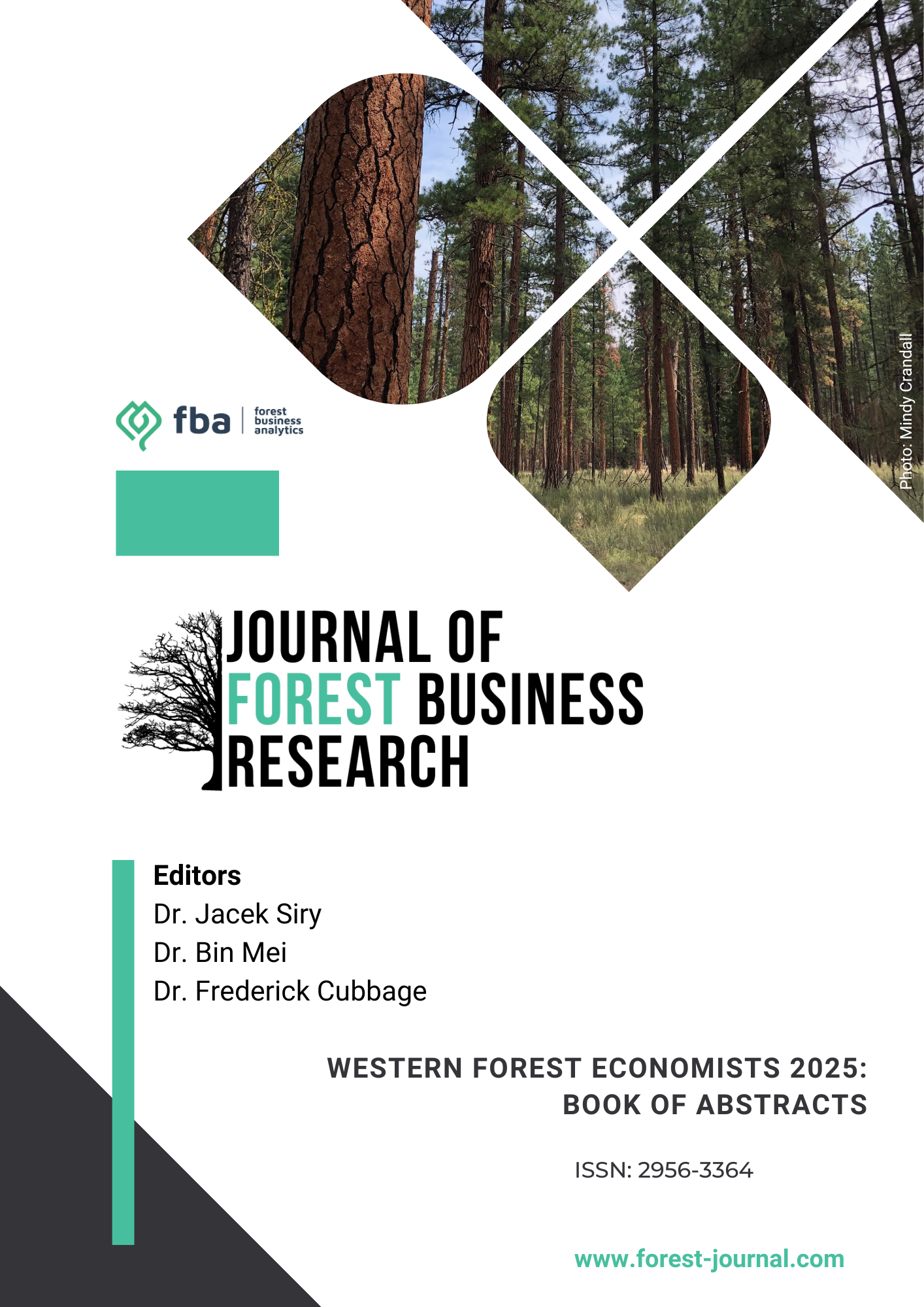Harvest or set-aside? A comparative carbon analysis grounded in real world data
Main Article Content
Keywords
carbon accounting, carbon debt, forestry LCA, legacy forests, substitution, wood product LCA
Abstract
A case study was conducted on the carbon impacts of forest harvesting and manufacturing in the Pacific Northwest Douglas-fir region using a combination of timber cruise data from older (80+ years) second growth, structurally complex, naturally regenerated stands (aka so-called legacy forests), scaled harvest volume, trucking data, and other secondary sources. These data were used to generate a life cycle impact assessment (LCIA) for the growth and harvesting of a cubic meter of harvested logs. These LCIA data were used as inputs to wood product models for Washington wood production facilities to generate a cradle to gate LCA of four primary harvested wood products (softwood lumber, plywood, and poles, hardwood lumber). These primary product LCAs were compared to functionally equivalent alternative wood and non-wood products to estimate substitution benefits from their use. Cubic meter comparisons were scaled to the log volume from the timber stands and compared to a no-harvest alternative on a per acre basis. Results, coupled with assumptions on growth and decay, were also used to generate an estimate of likely carbon outcomes 40 years forward. Key results include:
- Harvesting, manufacturing, product storage and substitution store or offset an additional 11.71 metric tons of carbon per acre over the no-harvest alternative starting in year 0. This full carbon accounting shows there is no carbon debt when substitution and leakage effects are accounted for in the analysis.
- Future forest growth in harvested stands increase the differential to as much as 72 metric tons/acre by year 40. Our findings contrast to other reports that suggest retaining these naturally regenerated older (80+) forests as carbon sinks generates a larger carbon benefit than harvesting and placing products in long-lived applications. These differences are partially a result of modeling assumptions about continued, and substantial, forest growth past year 80: such assumptions are not supported by the Forest Inventory and Analysis (FIA) data (USDA 2023).
- Ignoring the carbon stored in forest residues from harvest and underestimating or ignoring the impacts of substitution are large drivers of the differences reported here versus those in model-based literature.






